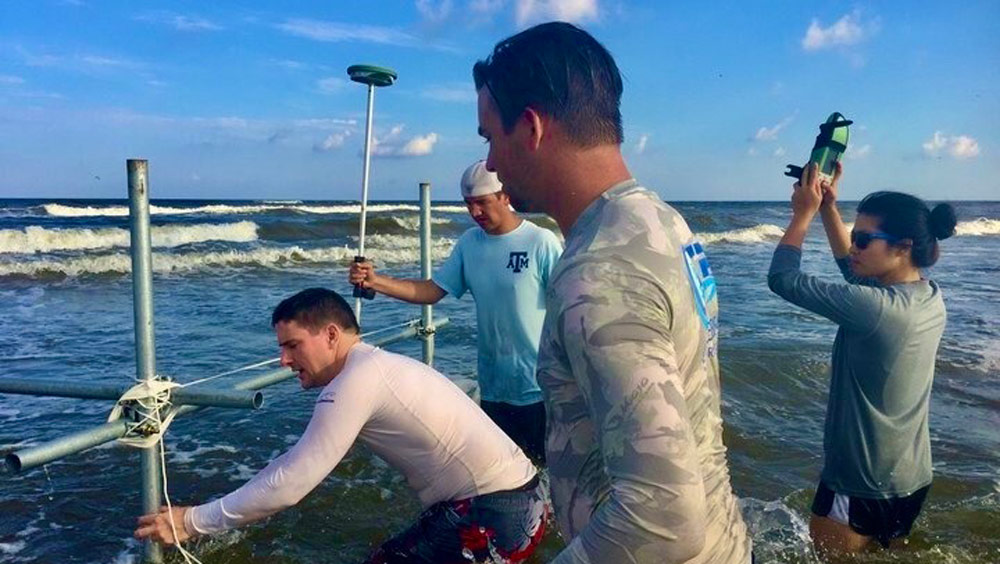
Dr. Jens Figlus, associate professor in the Department of Ocean Engineering at Texas A&M University at Galveston, and a team of researchers are creating better designed hybrid coastal structures to safeguard coastal communities exposed to flooding and destruction in light of rising sea levels, eroding coastlines and devastating hurricanes. These structures combine the benefits of coastal sand dunes with those offered by traditional, human-made structures, like seawalls, sea dikes and rubble mounds, to elevate their effectiveness and resilience.
The team’s work, inspired by natural sand dunes, will bridge the gap between research and application – allowing such structures to be utilized around the globe. Figlus details these types of hybrid structures in “Innovative Coastal Risk Reduction through Hybrid Design: Combining Sand Cover and Structural Defenses,” published in the Journal of Coastal Research.
“In the last decade or so, the tide has turned to not approach everything with just brute force – so, with concrete and steel type structures,” Figlus said. “The direction coastal engineering has gone is more toward what some folks call engineering-with-nature approaches. Instead of trying to constantly battle and work against nature or protect against nature, we're trying to use natural processes and more natural features to do the job that we intend to do as engineers, like reducing the risk of flooding and destruction and increasing the level of protection.”
Working with the Coastal Engineering Lab, the Center of Texas Beaches and Shores, and researchers from other institutions such as the Stevens Institute of Technology and Delft University of Technology in The Netherlands, Figlus is testing how the combination of sand dunes and hard structures can best weather a storm.
“The idea is that we're trying to make something look like and have vegetation ecosystems like a natural dune, but in its core, hidden underneath the sand layers, would be a hard structure,” said Figlus. “The combination of sand cover and hard structure is intended to do the job of reducing the risk of flooding, inundation and destruction behind it in the event of a big storm surge and massive wave attack – like during Hurricane Ike, but at the same time provide the aesthetic appeal and ecosystem services like a natural dune under normal conditions.”
Instead of trying to constantly battle and work against nature or protect against nature, we're trying to use natural processes and more natural features to do the job that we intend to do as engineers.
Research producing data-backed designs and guidelines for the construction of hybrid coastal structures has been lacking. To fill this vital gap, Figlus and his team have conducted physical model tests and simulations. Utilizing the Haynes Coastal Engineering wave basin in College Station, the team built a hybrid dune consisting of a rubble mound fortified core with sand on top. They tested various storm scenarios– changing the wave and water levels to explore how the structure reacted and deformed when hit by storm waves.

One primary objective of such a structure is to reduce the risk of flooding by limiting wave overtopping, or the amount of water that goes over the structure. This included testing what physical properties – such as slope and height of the dune – produce the best outcome and resilience against storm surge and wave impact.
“The practical application is really the coastal spine, intended to reduce the risk of flooding and storm surge damage to the greater Houston-Galveston region,” Figlus said. “We're actively working on concepts that could hopefully be used by the Army Corps of Engineers to design that potentially 70-mile-long coastal barrier. These hybrid systems are a really good alternative.”
